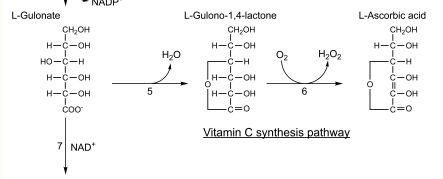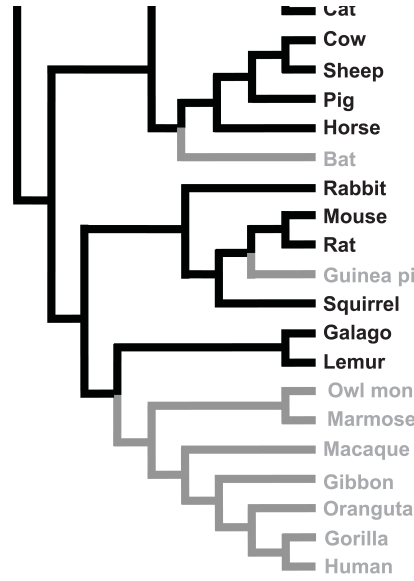.
Your body depends on six groups of essential nutrients, and each is vital for growth, development and continuing health.
Vitamins. Vitamins are organic — derived from living matter — compounds your body needs in small amounts to function properly. …
Minerals. …
Protein. …
Fats. …
Carbohydrates. …
Water.
Your body makes many of the nutrients, known as non-essential, that it needs to carry out its functions. Some nutrients, however, can’t be made rapidly enough — or at all — to meet daily needs; these are called essential nutrients.
They must be obtained from outside sources, such as food or supplements. Your body depends on six groups of essential nutrients, and each is vital for growth, development and continuing health.
Vitamins
Vitamins are organic — derived from living matter — compounds your body needs in small amounts to function properly. Because your body can’t make these nutrients, you must get them from food or supplements. Vitamins play an important role in digestion, and they’re crucial for body function regulation. Vitamins exist in two forms — fat soluble, which include vitamins A, D, E and K, and water soluble, which include the B-complex vitamins and vitamin C. To consume a wide variety of vitamins, include fresh fruits and vegetables, whole grains, low-fat milk, fish and eggs in your daily food plan.
Minerals
Minerals are inorganic compounds that your body is unable to manufacture. They help regulate body processes, and each one plays a particular role in your body’s proper functioning. Your diet must provide 16 minerals to maintain optimum health. They come in two categories: Macro minerals — sodium, potassium, chloride, calcium, phosphorus, magnesium and sulfur — are needed in larger quantities by your body, while trace minerals — iron zinc, iodide, selenium, copper, fluoride, chromium, molybdenum and manganese — are required in smaller amounts. Include mineral-rich foods like fruits, vegetables, whole-grains, nuts and fortified low-fat milk in your diet.
Protein
Protein is a component of every cell, and your body uses it to build and repair tissues. Protein is made from amino acids, but your body is unable to produce all of them. Dietary protein, therefore, becomes the main source of these essential amino acids. Fish, lean meat, poultry, eggs and cheese are complete proteins, meaning they contain all the necessary amino acids. Incomplete proteins, such as grains, legumes, nuts and seeds, should be eaten in a wide variety to ensure you consume all necessary amino acids
Fats
Your body requires monounsaturated and polyunsaturated fats, including omega-3 fatty acids, to maintain optimal health. Monounsaturated and polyunsaturated fats improve blood cholesterol levels, reduce inflammation and stabilize heart rhythms, says Harvard School of Public Health. Specifically, omega-3s are necessary for proper blood clotting and development of your brain’s cell membranes. These fatty acids also help protect against heart disease, cancer and stroke. Include foods that contain good fats, such as salmon, tuna, olive oil, canola oil, flaxseed, walnuts and almonds in your daily food plan.
Carbohydrates
Your body doesn’t manufacture carbohydrates, but they are broken down during digestion to provide fuel for physical activities and energy for proper body functions. Your nerves, muscles and brain depend on the energy provided by carbohydrates. According to Harvard School of Public Health, processing whole grains into refined foods, including white bread, sweets and white rice, removes minerals, fatty acids, as well as fiber, which results in foods that produce higher spikes in blood sugar than whole grains. Choose complex carbohydrates such as whole-grain breads, pasta and cereals, nuts, beans, lentils, peas and potatoes.
Water
Water makes up more than 60 percent of your body weight, according to MayoClinic.com. Your body’s daily fluid requirement exceeds what your body can make through processes such as digestion. Because you must supply your body with enough water to keep it functioning properly, it’s considered an essential nutrient. Water carries other nutrients and oxygen to cells, transports wastes away from cells, regulates body temperature and helps keep muscles and skin toned. Although individual water requirements vary, MayoClinic.com recommends drinking at least eight 8-ounce glasses of fluid a day.
Humans cannot synthesize vitamins A, B1 (thiamine), B2 (riboflavin), B5 (pantothenic acid), B6 (pyridoxine), B7 (biotin), B9 (folate), B12 (cobalamin), E and K but are able to synthesize some vitamin B3 (niacin) and D.
Vitamins are organic compounds which have to be obtained from the diet, either because an organism does not have the enzymes necessary to synthesize them or because it cannot produce them in sufficient quantities [1]. Humans cannot synthesize vitamins A, B1 (thiamine), B2 (riboflavin), B5 (pantothenic acid), B6 (pyridoxine), B7 (biotin), B9 (folate), B12 (cobalamin), E and K but are able to synthesize some vitamin B3 (niacin) and D. The last vitamin required by humans, vitamin C (ascorbic acid), is a special case in that this organic compound is synthesized by the large majority of vertebrate and invertebrate species. Interestingly, the vertebrate organ used to synthesize vitamin C changed twice from the kidney to the liver during evolution, once in birds and once in mammals. Whereas vitamin C is produced by the kidneys of fishes, amphibians, reptiles, and older bird orders, it is produced by the liver of more recent bird orders and of mammals. This switch to a larger organ in more active species has been interpreted as being the result of selective pressures to maintain biochemical homoeostasis under more stressful conditions. This is reflected by the fact that the human daily recommended intake for vitamin C (60 mg) is the highest among all vitamins.
Vitamin C is a water-soluble compound with anti-oxidant properties that protects living organisms against oxidative stress. It is also essential for collagen synthesis, which is why insufficient amounts of this vitamin lead to scurvy. Its other functions include the synthesis of carnitine, neurotransmitters and the catabolism of tyrosine, among others.
Yeasts, plants and animals use different pathways to synthesize vitamin C. Yeasts synthesize D-erythroascorbate from D-arabinose, whereas plants synthesize vitamin C from GDP-D-mannose and animals synthesize vitamin C from UDP-D-glucuronate shows the vitamin C biosynthesis pathway in animals starting from D-glucose-1-P.
Coenzyme Q10 helps generate energy in every cell in your body. This essential element is a powerful antioxidant and anti-inflammatory that defends cells from damage caused by harmful free radicals. … CoQ10 is produced in the human body. But levels of CoQ10 decrease as we age.
A common belief is that because our bodies lack chlorophyll, we cannot convert sunlight into energy directly. However, science is discovering something else. After eating greens, we have chlorophyll in our bloodstream, and this chlorophyll may react with sunlight that penetrates through our skin. When this happens, it seems our body is able to create Coenzyme Q10 (CoQ10) naturally.
Vegetables with the highest sources of vitamin C include:
Broccoli, Brussels sprouts, and cauliflower.
Green and red peppers.
Spinach, cabbage, turnip greens, and other leafy greens.
Sweet and white potatoes.
Tomatoes and tomato juice.
Winter squash.

Sorry to call your vitamin salesman a liar (They are good used car salespersons), but your body cannot possibly use more than 100 mg. of the co-enzyme vitamin c. Co-enzyme means that it is not the primary enzyme of a protein production, but is required as well to produce the protein. 150 mg. a day is required if you smoke or are under a lot of stress. It is total bull hockey that a human could use or need 1,000 mg. of vitamin c a day. This is from reputable scientific research, not people getting paid to say this.

Get all eight B vitamins from a variety of foods:
Whole grains (brown rice, barley, millet)
Meat (red meat, poultry, fish)
Eggs and dairy products (milk, cheese)
Legumes (beans, lentils)
Seeds and nuts (sunflower seeds, almonds)
Dark, leafy vegetables (broccoli, spinach, kai lan)
Lisa gene Cox
Texas Best Food Service Training
February 2, 2019